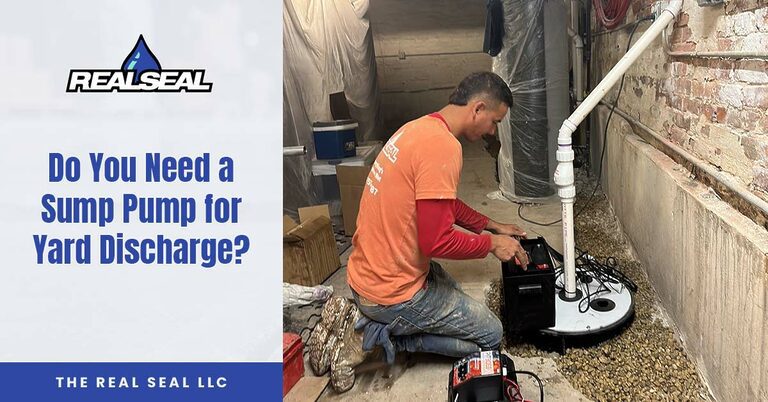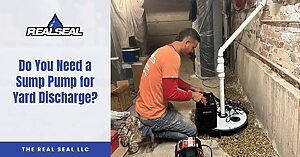Wondering if you might need a sump pump for yard drainage? If so, you’ve landed on the right page because that’s what this article is about. We’ll review sump pumps, why you might need one for yard drainage, how they work, and more.
What Is a Sump Pump?
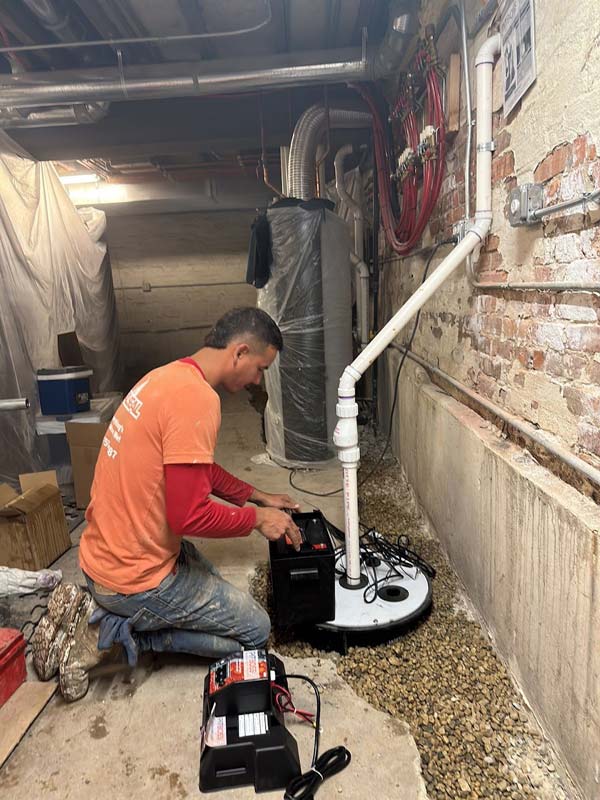
A sump pump is a device commonly used in residential and commercial buildings to mitigate the risk of flooding. The pump is typically installed in a sump pit, a small, cylindrical basin excavated in the lowest part of a basement or crawl space.
A sump pump ejects water out of the sump pit and away from the building. This prevents the accumulation of water that could cause expensive and detrimental damage to structures and possessions. The pump is usually powered by electricity and is equipped with a float switch that activates it when the water level in the pit rises to a certain point.
There are two types of sump pumps
There are two types of sump pumps: pedestal and submersible. Pedestal sump pumps, also called upright sump pumps, are mounted above the sump pit. Submersible sump pumps are placed beneath the water level in the pit.
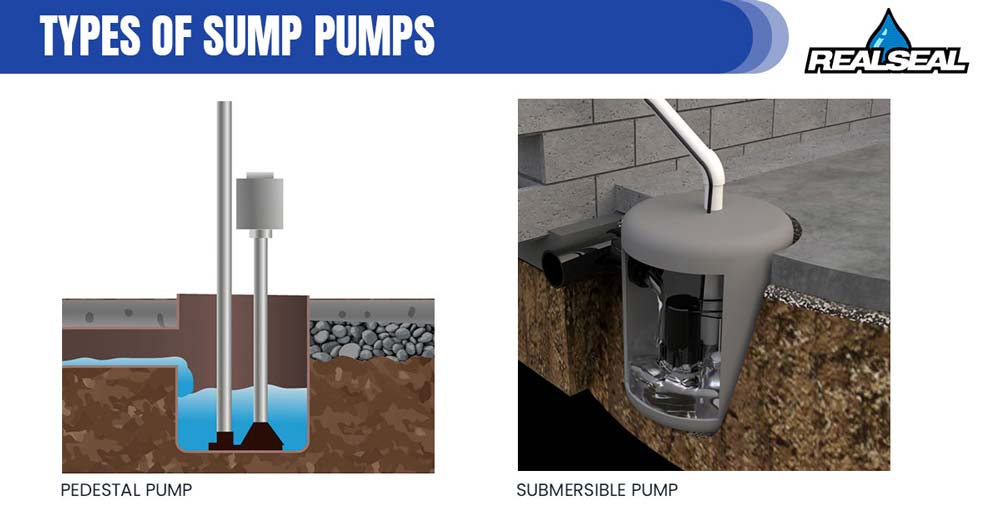
Sump pumps are essential in areas prone to heavy rainfall, high water tables, or where the terrain is flat, making it difficult for water to drain naturally. They’re also recommended for basements, crawl spaces, and other areas where water accumulation is likely.
Why Do Homeowners Use Sump Pumps for Yard Drainage?
Homeowners often use sump pumps for yard drainage because they understand the importance of controlling groundwater around the foundation. Sump pumps not only help prevent yards from becoming soggy and unpleasant, but they can also help prevent serious foundation problems caused by excess moisture in the ground, including differential settlement and problems caused by hydrostatic pressure.
What is differential settlement?
While it’s common for a new foundation to settle slightly into the ground after construction, this usually isn’t a concern as long as the settlement is uniform. Problems develop, however, when the settlement isn’t uniform. This is called differential settlement. The best way to understand the difference between uniform settlement and differential settlement is through an illustration:
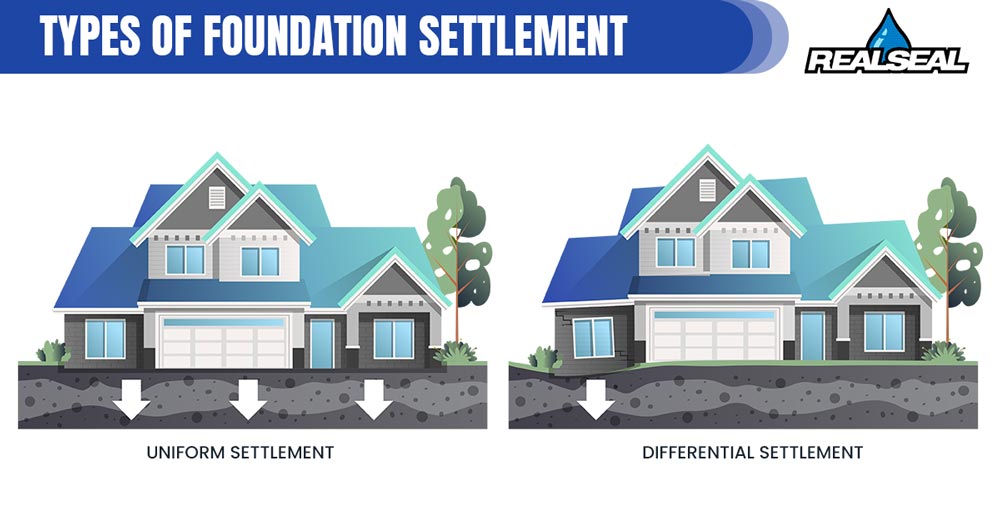
Differential settlement places a lot of stress on a foundation and can lead to severe structural damage if it isn’t corrected.
Water is a major contributor to differential settlement because it can cause some soils to swell and others to wash away. By using a sump pump to remove excess water from the yard, homeowners can help mitigate this risk and keep their homes safe and stable.
Problems caused by hydrostatic pressure
Hydrostatic pressure is another force that can wreak havoc on a basement or crawl space foundation. When soil becomes saturated with water, it exerts pressure on foundation walls, which can eventually cause them to bow inward and even crack. By removing water from the yard, homeowners can reduce the amount of hydrostatic pressure on their foundation walls and prevent costly repairs.
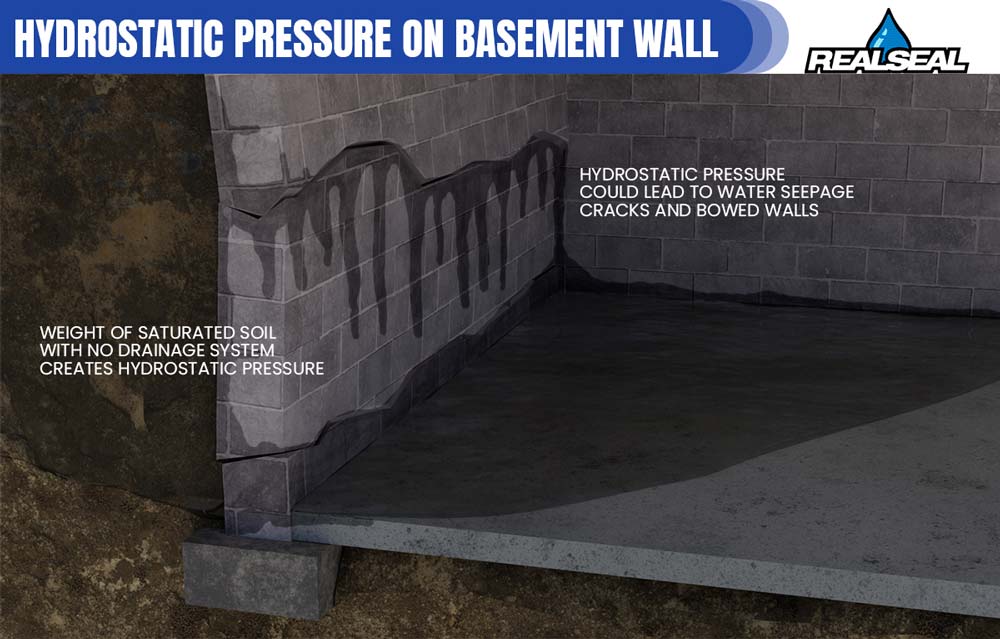
How Do Sump Pumps Work for Discharging Water From A Yard?
The way a sump pump works is pretty simple. First, a pit or basin is dug into the ground at a low point in your home’s yard, basement, or crawl space. The sump pump is then installed in the bottom of the pit. The pump has an automatic float switch that turns it on and off based on the water level in the pit. Some sump pumps have alarms that alert homeowners when the water level reaches a certain point. Sump pumps are typically powered by electricity. However, they may have a backup battery in case of power failure.
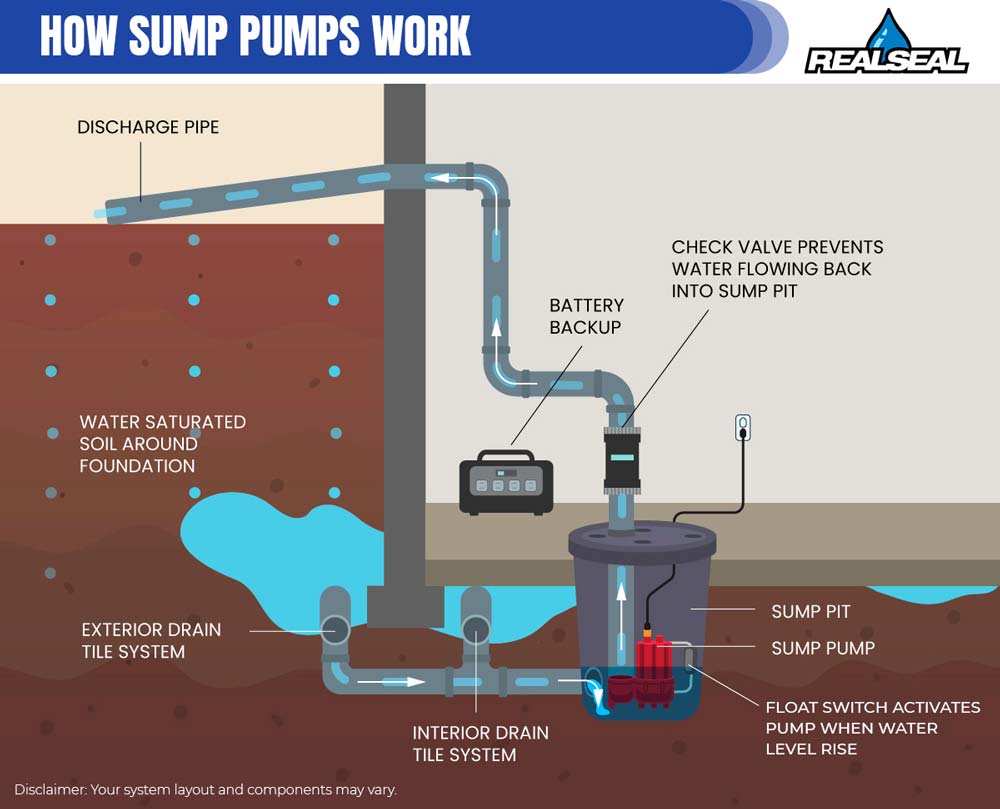
It’s crucial to properly maintain sump pumps to ensure their optimal performance. Regular inspections, cleaning, and testing of the pump and its various components, such as the discharge pipe and check valve, are necessary to avoid malfunctions and system failures.
Signs You Might Need a Sump Pump
One of the most obvious signs that you might need a sump pump is a wet basement or crawl space. If you notice standing water, dampness, or a musty odor in these areas, you probably have moisture seeping in from the surrounding soggy soil. Without a sump pump, this water can cause significant damage to your home.
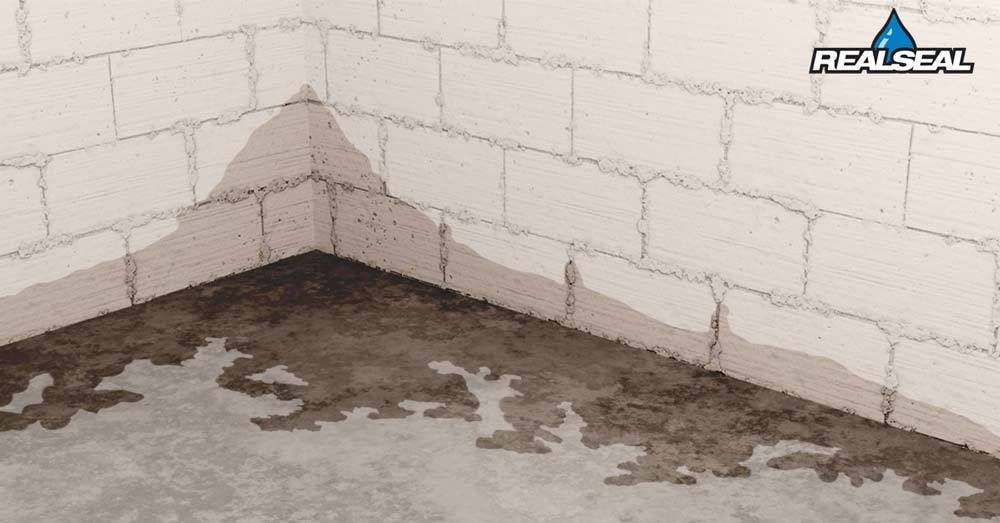
Other signs you might need a sump pump include a high water table or previous flooding in your area. If you live in an older home that wasn’t built with modern waterproofing techniques, a sump pump is even more essential to prevent water intrusion.
Overall, if you want to protect your home from water damage and ensure that your basement or crawl space remains dry, investing in a quality sump pump is a wise decision.
Other Things You Can Do to Help Keep the Ground Around Your Home Dry
In addition to a sump pump, there are some other things you can do to help keep the ground around your home’s foundation dry. These include the following:
- Clean your gutters regularly – Gutters are critical in directing rainwater away from the foundation. If they’re clogged with leaves and other debris, water can overflow and pool around the foundation, causing damage.
- Install downspout extensions – Downspout extensions help to direct water away from the foundation before release. We recommend releasing water no less than 15 feet from the foundation.
- If necessary, regrade your yard – A yard that slopes toward the house increases the chance of water pooling around the foundation and causing trouble. The yard should slope away from the home so groundwater flows away from the foundation.
- Install a drain tile system – A drain tile system prevents excess moisture from building up in the ground around the foundation. The system involves a perforated pipe installed around the perimeter of the foundation at the footing level. It collects excess groundwater and directs it toward a sump pump for removal. See How A Drain Tile System Can Save You Money for more information.
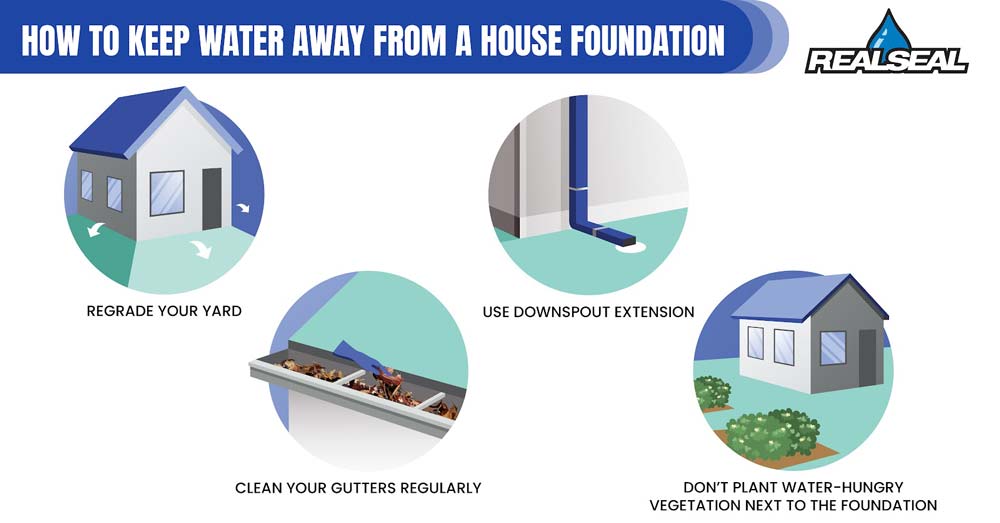
Sump pumps are essential for homeowners who want to prevent water damage to their property. With proper installation and maintenance, sump pumps can ensure that your home and yard remain dry and safe even during the heaviest of rains.
If you’re considering a sump for yard drainage around your Chicagoland home, contact The Real Seal today to schedule an evaluation.
